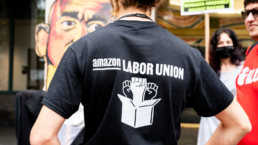At the dawn of the Great Depression, millions of workers were angry and didn’t see existing unions rising to the moment. They managed to build a fighting labor movement that transformed labor law and won the welfare state as we know it.
By Shaun Richman, Jacobin
Review of History of the Labor Movement in the United States: The Great Depression 1929–1932 by Philip S. Foner (International Publishers, 2022)
In a period of extreme social and economic crises, when the major labor unions have reduced their organizing programs to a fraction of what they once were and the courts stand athwart any effort to protect workers’ interests, scrappy new independent unions raise hope against hope that maybe — just maybe — workers can fight back and win. I’m writing, of course, about the early 1930s. A newly published book finds some surprising parallels between that era and our own.

An eleventh volume in the prolific Marxist labor historian Philip S. Foner’s History of the Labor Movement in the United States has just been published, after it was discovered that Foner had completed the manuscript before he died in 1994. Subtitled The Great Depression 1929–1932, the book covers a period in which the established unions of the American Federation of Labor were not conducting many organizing campaigns or strikes and had little idea how to successfully contest for power in the large mass production industries that played a dominant role in American life.
As such, it’s really more of a history of the Trade Union Unity League (TUUL), the short-lived federation of independent labor unions sponsored by the Communist Party in the years before the emergence of the Congress of Industrial Organizations (CIO).
Recent Posts
‘Unconstitutional. Unethical. Authoritarian.’ ICE Bars Millions Of Immigrants From Bond Hearings
July 18, 2025
Take Action Now One watchdog said the new policy “seems like a blatant attempt to stop them from exercising their right to due process.”……
Americans Are Not Nearly Alarmed Enough About Climate Change
July 18, 2025
Take Action Now Americans still don’t comprehend how imminent, dangerous, and far-reaching the threat is—and journalists are partly to blame.By…
The IRS Is Building A Vast System To Share Millions Of Taxpayers’ Data With ICE
July 17, 2025
Take Action Now ProPublica has obtained the blueprint for the Trump administration’s unprecedented plan to turn over IRS records to Homeland Security…
Israel’s Sudden Assault On Syria Is Unchecked Aggression
July 17, 2025
Take Action Now Jerusalem is bombing Damascus and threatening al-Sharaa’s rule, while Washington was hoping to help the nascent government on…




